
Only nine short months have passed since AAM began its initiative Facing Change: Advancing Museum Board Diversity & Inclusion, which provides training, support, and resources to help museum leadership become more representative of the communities they serve. Funded through the generous support of The Andrew W. Mellon Foundation, Alice L. Walton Foundation, and Ford Foundation, AAM is now equipped to bolster the efforts of the many organizations and people who have been working toward social change by working at the museum board level.
To support museum leaders during this transformative process, our ten extraordinary Senior Diversity Fellows will act as “coaches” helping our participating organizations each step of the way. The project could not happen without their wealth of knowledge, variety of expertise, and inspiring dedication to the cause. Over the course of this two-and-a-half-year program, the fellows will also regularly share their insights and experiences with the field on this blog, to expand the reach of the program beyond the selected participating museums. I hope you find their insights useful and their messages impactful.
Without further ado, let me turn things over to the Facing Change Senior Diversity Fellows to introduce themselves. You’ll be seeing their names and faces around the blog for the next few years!
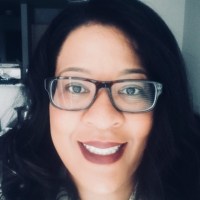
Aiko Bethea
Principal, RARE Coaching & Consulting, LLC
(She/her/hers)
When I was younger, I didn’t appreciate the gift of having a mother and grandmother who were artists. My mother had moved from Japan to Spartanburg, SC with my sister and father. My grandmother later joined to helped to raise us. We were mainly focused on surviving. Living in the segregated South as a poor family had its own challenges. But it also had its joys. Think ikeban, sho (calligraphy), haiku, pressed silk flowers, sewing, gardening, short stories, origami, and some pretty wild Asian and Southern cooking. These were some of the gifts of art that were a part of my life at home.
Out of the home, we had little exposure to museums, concerts, dance performances, or theater. But when we did, like the time we went to see a performance of The Nutcracker, we got the feeling we weren’t supposed to be there, that we didn’t belong. These feelings relay the message that art is not for you.
But then there was the time my mother saved enough to take us to a matinee Off-Broadway production of Once Upon This Island. The majority-brown cast and audience of New Yorkers who dressed in jeans and didn’t stare at us left a long-term shift in my perspective. Being able to see yourself reflected on stage, sitting among an audience admiring a cast that looks like you, and being in this shared space as a part of the experience can change a life. It changed mine—my perspective of art, space, and myself.
As a result, I would go on to serve as the board chair for Seattle Children’s Theater, with a focus on ensuring the theater experience was accessible for more youth and their families. I’m also raising two brown boys who love theater and books by Jason Reynolds and Kazu Kibuishi, who also think of themselves as artists. I also have the privilege of being part of the equity and inclusion journey of two exclusionary sectors—art and STEM. I look forward to being a part of AAM’s effort to create a more diverse, equitable, inclusive, and accessible museum sector and community. This work will change lives.
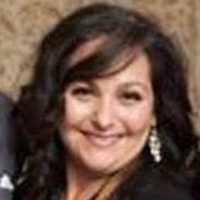
Sandra Bonnici
DEAI Consultant
(She/her/hers)
I have a deep love of museums as places of story, dialogue, connection, and reflection. But I also know that these beautiful treasures have not fully served, engaged, or listened to the voices of all communities, especially marginalized and minoritized communities. My professional life has been devoted to working to understand, unpack, and dismantle the systems of inequity that exist both in our field and in our society.
As a first-generation immigrant whose father survived ethnic cleansing, war, and refugee camps, I have personal experience with othering and discrimination. But as my mother was white and Protestant, I also experience and have had to unpack privilege and “isms.” Walking in these two worlds has instilled in me the drive to work towards equity, inclusion, and social justice.
I have spent most of my career in the museum field focusing on community engagement, cultural competency, and education programming.
In my role as Associate Director of Education, Diversity, and Inclusion for Madison Children’s Museum I managed strategic initiatives, including:
- a Community Conversation process to build relationships within the community, centering on shared community aspirations
- a Teen Workforce program that engages youth of color in first-time job opportunities and skill development
- an Autism and Sensory Processing initiative that developed a toolkit for museums to evaluate and improve their services
- an Organizational Change initiative leading staff and board teams to apply an equity lens to policies and procedures, the result of which is a recently adopted inclusion statement and revised board committee structures
I have served on several arts and youth organization boards and work collaboratively with other museums and cultural arts institutions to further diversity, inclusion, and equity. I am a workshop leader and consultant for museums, libraries, and non-profit organizations on topics such as strategic planning and organizational change around diversity and inclusion, barriers to participation for under-resourced and under-represented audiences, teen workforce development, and special needs inclusion.
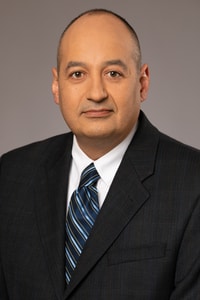
Eric Carpio
Director of Fort Garland Museum and Cultural Center & Philanthropy Officer for Community Museums, History Colorado
(He/him/his)
I’m honored to serve as one of the Senior Fellows for Diversity, Equity, Accessibility, and Inclusion for AAM’s Facing Change initiative. While I’m relatively new to the museum field, I have over twenty years of experience in higher education administration and student services, most recently as the assistant vice president for student services at Adams State University.
Informed by my own college experience as a first-generation Chicano student, I became interested during my tenure in higher education in dismantling barriers faced by marginalized and underrepresented communities, and advancing DEAI policies and practices. While at Adams State, I played a leadership role in creating the institution’s Cultural Awareness & Student Achievement (CASA) Center and re-establishing the College Assistance Migrant Program (CAMP). I’m also a co-founder and past president of the Colorado Coalition for the Educational Advancement of Latinos (CoCEAL), a statewide organization of Latinx higher educational professionals collaborating to advance college access, success, and graduation for the state’s Latinx population.
In 2017, I entered the museum world as the philanthropy officer for History Colorado Community Museums, where in addition to traditional fundraising, I was responsible for assisting museums with identifying, expanding, and fostering strategic partnerships and engaging communities. This past May, I transitioned into my current role as director of the Fort Garland Museum & Cultural Center, where we’re in the midst of crafting a renewed vision for the site, centered on co-creating and elevating community voices through diversity, equity, and inclusion. I’m pleased that our vision is being recognized by the National Endowment for the Humanities through the receipt of a recent Landmarks of American History award, which will bring more than seventy educators to the site in summer 2020 to explore the complex history of the American southwest through the intersection of geo-political, geographic, cultural, ethnic, and religious landscapes.
When I’m not engaged in museum activities, I’m involved in a variety of community endeavors that align with my personal interests and passions. I serve on the boards of directors for the Boys & Girls Club of the San Luis Valley and the San Luis Valley Immigrant Resource Center, I’m an active member of Sacred Heart Parish, and teach civics and leadership for the local Migrant Education Program. I am an avid runner and enjoy the Colorado outdoors and spending time with my wife, Lia, and son, Isaiah.
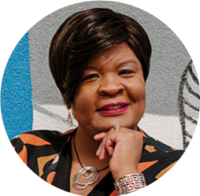
Makeba Clay
Chief Diversity Officer, The Phillips Collection
(She/her/hers)
Growing up, my parents instilled in me an appreciation for the beauty of the diversity of human experience, particularly as captured through art and stories. In fact, my linkages to the creative and social justice worlds are codified in my namesake, Miriam Makeba, a renowned South African humanitarian and folk singer. From a young age, I constantly engaged with and was exposed to the power of the visual and performing arts as an audience member. As one of only a few people of color in my small upstate New York community, I learned to connect across racial difference and became attuned to the subtle dynamics of identity and belonging. Both the arts and my family provided models for connection and bridgebuilding.
Continual exposure to different stories and experiences—whether on stage, in museums, or with people in our community—imparted a deep sense of empathy that has been a guiding light in my personal and professional life. Empathy for and curiosity about other cultures has led me to be a natural border crosser; I have lived and worked in many different parts of the world, including Europe, Asia, and Africa.
Professional work in diversity, equity, accessibility, and inclusion (DEAI) felt like a natural outlet for my interest in building communities and organizations where difference can thrive. I spent twenty years doing this work in higher education at institutions like the University of Maryland, Johns Hopkins University, and Princeton University. Later, I started my own consulting firm to broaden my impact and reach, which led me back to the world of arts and cultural institutions by way of the Smithsonian Institution. There I served as the first Chief Diversity Officer for one of its member museums, marrying my passions for the visual arts and organizational change, and found both to be mutually reinforcing sources for social transformation.
While I’ve seen some incremental progress around DEAI in museums related to programs, audience, and staff, I have seen only minimal impact in the areas of museum boards and broader governance. It is in these latter areas of leadership and institution-shaping that lasting change gets made. As a Senior Fellow, I am drawn to the opportunity to work with boards, because they embody the ideal entry point to scale impact individually, institutionally, and in the museum field more broadly. In coaching and strategizing with these key members of the museum community, including board members and executive leadership, I hope to build cultural competency skills together that will foster institutional capacity to better tell all our stories.
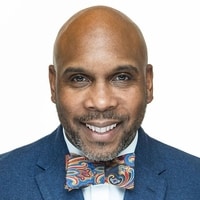
Omar Eaton-Martínez
Assistant Division Chief, Historical Resources; Maryland-National Capital Parks & Planning Commission
(He/him/his)
The opportunity to be part of Facing Change, a major initiative to press forward diversity, equity, accessibility, and inclusivity in museum leadership and the sector at large, has fueled my desire to progress as a servant leader. A servant leader is someone who actively listens in order to be in service to the organization it leads and the communities it serves. My vision for this DEAI work is to support museums in creating transformational experiences that allow us to see the humanity in one another.
As a black Puerto Rican, I understand the complexities of systemic injustice, which I have experienced not only from the dominant white culture, but even among other communities of color. The consequences of not understanding the nuances of these multiple oppressions create “blind spots” which are biases that guide our behavior that we do not easily recognize.
In order to position our field to do “the work,” we must make critical changes to our organizational cultures, which will require a thorough introspection of our own behaviors. In AAM’s commissioned report Museum Board Leadership 2017, a key finding was that museum directors and board chairs believe in diversity and inclusion, but have not taken the time to strategically address the issues. One of five key insights from AAM’s DEAI Working Group was that, “Inclusive leadership means respectfully listening to opinions that challenge the norm.” My life’s work has been dedicated to acknowledging communities that have been previously overlooked and disenfranchised.
Being part of this inaugural group of fellows does not come without challenges, but as Septima Poinsettia Clark, the African American Civil Rights activist, said, “I have great belief in the fact that whenever there is chaos, it creates wonderful thinking. I consider chaos a gift…” Our cohort of professionals are up for the challenge and I am glad to cast my lot with them!
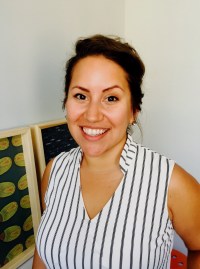
Ann Hernandez
Senior Manager, Inclusion Initiatives, Association of Science-Technology Centers
(She/her/hers)
DEAI is a deep-rooted passion for me. As a biracial woman of color and the daughter of a man living with blindness, I have always had a personal interest in inclusion and accessibility, which became the catalyst for a career driving organizations and social systems toward a more diverse and equitable future. I have worked in the DEAI sphere as a designer of inclusive educational content at Ann Arbor Hands-On Museum, as a learner and mentor in the Association of Science-Technology Centers’ (ASTC) Diversity and Leadership Development Fellows Program, and as a manager of inclusion initiatives at ASTC.
In these roles, I have guided a myriad of museums, zoos, aquariums, and community organizations through systemic change to become more culturally competent and inclusive. In my experience, empowering individuals at all levels of an organization makes powerful waves, but institutional change needs to be supported on a governance level at a museum to have lasting effects. By focusing on this level, which combines the experience of an organization with the influence of its community, the Facing Change fellowship is an ideal opportunity to help broad perspectives inform the mission and culture of a museum. In working to include community ideas and values in their practices, and diversify their staff and stakeholders, museums will ensure their continued relevance and sustainability.
Although I have had different titles in my roles to promote equity and inclusion—director, coach, manager, mentor—I consider myself an educator above all else. I believe in introducing unfamiliar ways of being and thinking, relating the experiences to the learner’s own culture, reinforcing inclusive behavior, and starting the process over when the next unfamiliar idea emerges. In order to learn, we should be asking questions, stimulating conversations, and challenging our biases. Cultural competence is a never-ending journey and I am honored when I get a chance to help others navigate it.
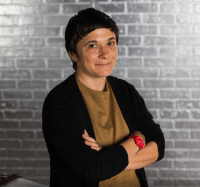
Danielle Linzer
Director of Learning and Public Engagement, The Andy Warhol Museum
(She/her/hers)
I am honored and excited to be a member of the incredible Facing Change team. While I was born and spent most of my life in New York City, I am now based in Pittsburgh, PA where I oversee learning and public engagement programs at The Andy Warhol Museum.
From the Tenement Museum to the Whitney to The Warhol, I’ve been fortunate to spend over a decade working with diverse collections, stories, and visions that help to both construct and complicate our ideas of American identity, creativity, history, and culture. As an educator, evaluator, and experience designer, the core of my work has always been examining the forces and conditions that keep all people from engaging with our institutions—from systemic and structural racism and ableism, to architectural and financial barriers. Throughout this time, I have made it my mission to ensure that our institutions open their doors wider and wider, reshaping themselves with intention to be more representative of their communities. I’ve worked strategically to implement programs, partnerships, pipelines, and policies that advance diversity, equity, accessibility, and inclusion in museums. From universal design to anti-racist pedagogy to inclusive workforce development, I’ve helped bring tools and frameworks into cultural institutions to start to break down those barriers and welcome in new voices and perspectives. As much as I am confident in this process, I also recognize the enormity of the task at hand, and the immense challenges and potential pitfalls of the work ahead.
Now, as part of Facing Change, I’ll be working directly with organizational leadership at several museums as they tackle these issues—an unprecedented opportunity. Evaluation has long been a cornerstone of my practice as an educator, a critical tool for learning, reflection, and progress. It is my sincere hope that we can thoughtfully document, evaluate, and share these efforts so that they can serve as models across the field. As museums large and small push for greater inclusion at their most senior levels, it is my hope that we will spark a tidal wave of transformation, changing the very definition of what a museum can be.
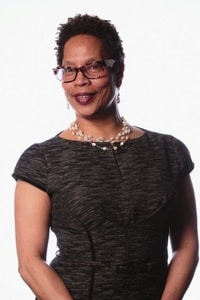
Azuka MuMin
Inclusive Cultural and Community Engagement Consultant
(She/her/hers)
Museums reflect our culture, document our relationships with each other, and give us context as we navigate the complexities of modern life. As a museum practitioner, as a Senior DEAI Fellow, and as a black woman, I am pleased that museums are realizing how historical inequalities have shaped the field, and understanding that in order for museums to be relevant community resources, they must also be diverse and inclusive—from their visitors to their board members.
My long-held interest in social justice is grounded in degrees in Social Policy and Pan-African Studies, along with a master’s degree in Cultural Community Development. While I never expected to use these degrees to work at a science center, I found great synergy for my dharma (purpose) at the Center of Science and Industry (COSI) in Columbus, Ohio. For over a decade at COSI, I led audience development initiatives using an approach called “Invite, Welcome, Engage,” which brought diverse and underrepresented external voices into planning discussions for exhibits, programs, films, and community events. As COSI’s Senior Vice President for Engagement & Impact, I spearheaded a pilot division that elevated equity in our research/evaluation, programming, philanthropy, and volunteer programs. In 2018, this work earned COSI a Business First Diversity in Business Award. Prior to joining COSI, my leadership experience included roles in federal and state social service agencies; I also co‐founded a successful nonprofit organization that facilitated women’s independence from public assistance through education, employment, and mentorship. The organization was recognized with Ohio’s distinguished Governor’s Award for Excellence in Public Service.
I look forward to “facing change” with this courageous cohort of fellows and with our museum colleagues as we advance this critical work nationally. In the words of Titan Iitaka (aka Sitting Bull), “Let us put our minds together and see what life we can make for our children.” It greatly matters what kind of world we leave behind for our children and our children’s children. Hopefully, our contributions to the field will help honor the diversity that makes us a beautiful world of difference.
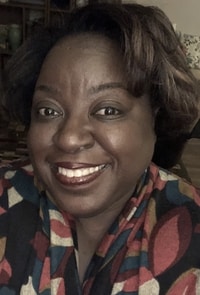
Cecile Shellman
Museum Consultant, Cecile Shellman Consulting
(She/her/hers)
A few years ago, my niece Maya came to visit me with her family. Maya, then seven, was full of innocent charm and curiosity as we traipsed around museums for two full days.
In the art museum, we meandered through halls boasting large, colorful paintings on canvas. Maya approached each label, sounding out the artists’ names and reading about their backgrounds. Structured chronologically, these well-appointed galleries of nineteenth-century European art were skillfully contextualized. Having seen their opulence, we made our way into a dimly lit hall where small wooden and clay figures perched curiously on tall white pedestals. “What are these?” Maya asked. Well, I told her, they were artifacts from various countries in Africa. But the few labels in the room had very little interpretation. It felt shabby, lonely, and embarrassing—just as I did as a senior museum employee unable to articulate why there was not even a curator on staff responsible for this display.
My niece, in her Afro-puffed, righteously indignant glory, asked: “Why is this room so different from the other room? Why don’t we know more about what’s here?”
What a poignant question from such a small child. It’s a field-wide question that reverberates daily and is on the lips of visitors and professionals alike.
It was for this very reason that I began my museum journey decades ago: to shatter ceilings and break barriers. I wanted my heritage to be heard, seen, and understood. I knew what my niece was going through.
Since the mid-1990s I have worked in museums of various kinds, both small and large. There has been a glaring common thread to all of them: a lack of diversity and inclusion in the staffing, among the visitors, and in the offerings themselves.
In 2017, I was delighted to be selected as a member of AAM’s Working Group, which researched what was known about DEAI in the field, led by Dr. Johnnetta Betsch Cole and AAM’s President and CEO Laura Lott. Fast forward to 2019: I now work as an independent DEAI consultant to museums, and I’m grateful to have been named a Senior Fellow for AAM’s Facing Change initiative, which picks up where the Working Group left off.
I’m thrilled to lend my expertise to a community of museums dedicated to improving their practices. The giddy little girl inside of me wants to see not only exhibit halls filled with richly interpreted cultural artifacts, but thoughtful, mindful representations of diverse racial and ethnic communities throughout museum leadership, staff, exhibits, and programming. It is through this rigorous program, funded by generous support and fueled by the dedication of select museums and AAM staff, that we hope to achieve this aim.
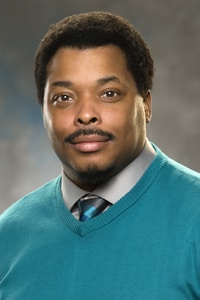
Levon Williams
Graduate Fellow, Office of Diversity, Equity, and Inclusion, Indiana University O’Neill School of Public and Environmental Affairs
(He/him/his)
What I’ve learned in my grassroots DEAI work over the years is that the most effective results happen when institutions are deeply engaged and committed to becoming more inclusive, and eager for the positive change that comes as a result. That’s what excites me about being part of the Facing Change project: the chance to combine those grassroots efforts with those at the governance level, and work directly with institutions determined to better reflect the communities they serve.
I see my role in the project as being a thought partner working collaboratively with our participating museum boards, consultants, and other Senior Fellows in the program, to facilitate productive and transformative conversations around diversity, equity, accessibility, and inclusion. Shifting organizational culture is a task that requires a deep commitment—we’ve all heard stories of initiatives with this goal starting and then not being given the priority, resources, and/or support such an undertaking warrants.
I view DEAI primarily through a social justice lens. I believe in beginning these critical conversations with a shared understanding amongst participants that this work is long-term, evolving, and will at times be uncomfortable. For those who are not already skilled in working through that discomfort, I have found that building the stamina to do so is a cornerstone to moving past some of the hurdles we so often encounter around sustaining DEAI initiatives. From a space of shared willingness to listen, self-reflect, and challenge ourselves, we can begin to take the deep dives and have the critical conversations needed to dismantle the internal systems that preclude or stymie inclusive organizational culture.
There will be plenty of hurdles in the journey toward becoming more inclusive and equitable in our institutions, but the long-term benefits of grappling with these challenges far outweigh them. For that reason, it is important that we keep the goal of ensuring museums remain vibrant, relevant, and representative of the communities they serve at the center of our work. I’m excited to help bring more and important voices to the table for museums at the governance level. Too often there are barriers, both overt and less obvious, that keep boards and organizations at large stagnant on inclusive growth. Being a key member of a project that will prioritize and sustain that work within the museum space is a wonderful and meaningful opportunity. I look forward to contributing to this collaborative effort that will be impactful throughout the field.
Skip over related stories to continue reading article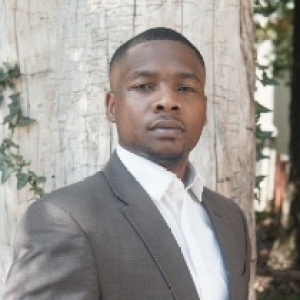
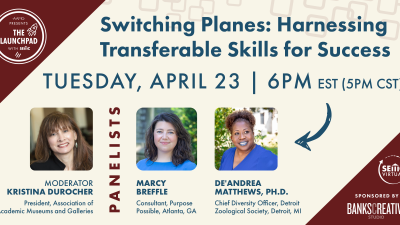



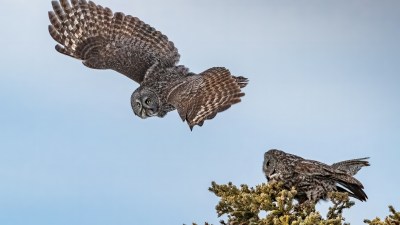
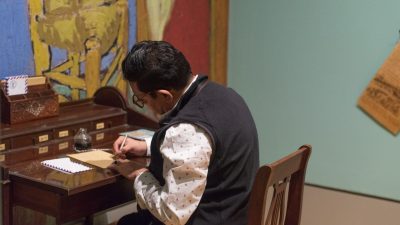
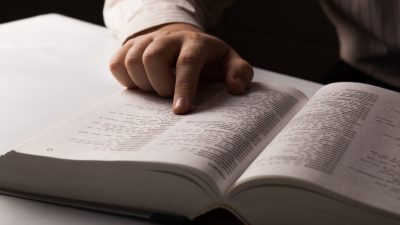
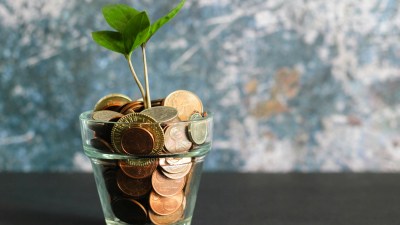
Comments